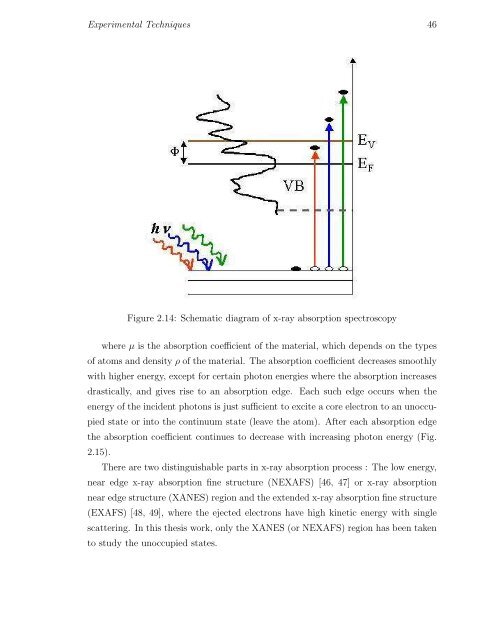PHYS07200604007 Manas Kumar Dala - Homi Bhabha National ...
PHYS07200604007 Manas Kumar Dala - Homi Bhabha National ...
PHYS07200604007 Manas Kumar Dala - Homi Bhabha National ...
You also want an ePaper? Increase the reach of your titles
YUMPU automatically turns print PDFs into web optimized ePapers that Google loves.
Experimental Techniques 46<br />
Figure 2.14: Schematic diagram of x-ray absorption spectroscopy<br />
where µ is the absorption coefficient of the material, which depends on the types<br />
of atoms and density ρ of the material. The absorption coefficient decreases smoothly<br />
with higher energy, except for certain photon energies where the absorption increases<br />
drastically, and gives rise to an absorption edge. Each such edge occurs when the<br />
energy of the incident photons is just sufficient to excite a core electron to an unoccupied<br />
state or into the continuum state (leave the atom). After each absorption edge<br />
the absorption coefficient continues to decrease with increasing photon energy (Fig.<br />
2.15).<br />
There are two distinguishable parts in x-ray absorption process : The low energy,<br />
near edge x-ray absorption fine structure (NEXAFS) [46, 47] or x-ray absorption<br />
near edge structure (XANES) region and the extended x-ray absorption fine structure<br />
(EXAFS) [48, 49], where the ejected electrons have high kinetic energy with single<br />
scattering. In this thesis work, only the XANES (or NEXAFS) region has been taken<br />
to study the unoccupied states.
















